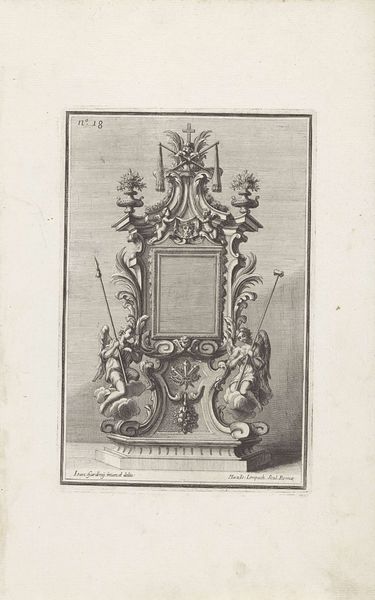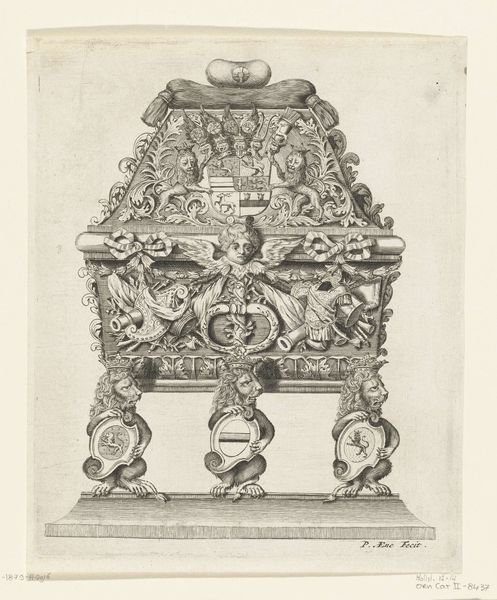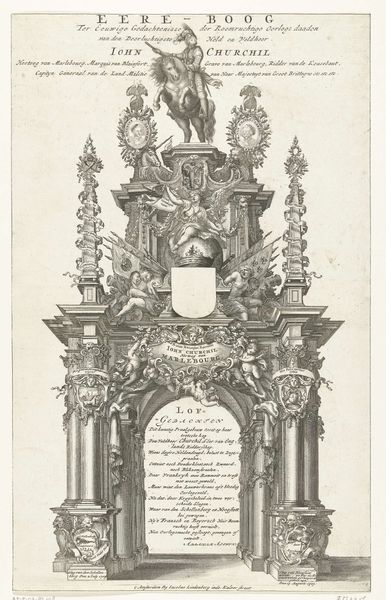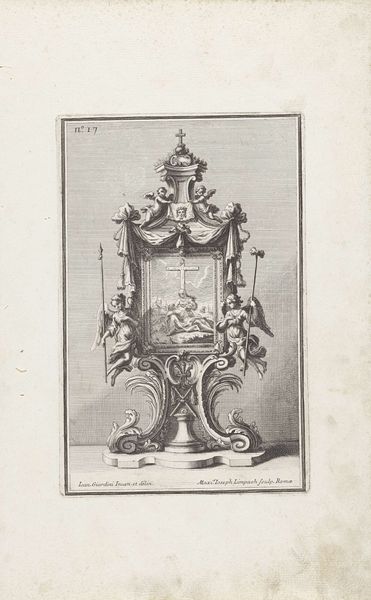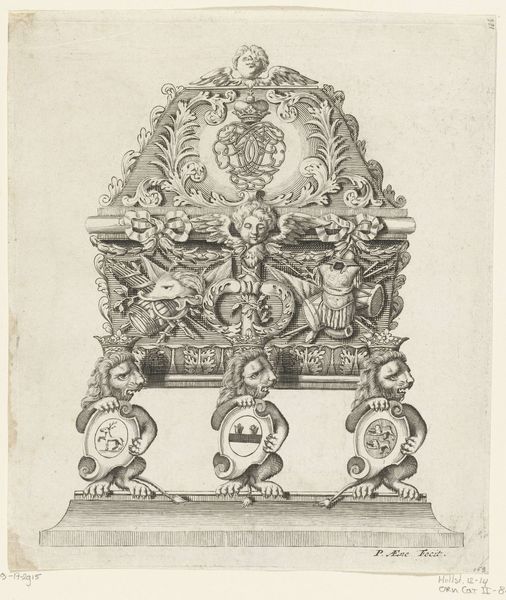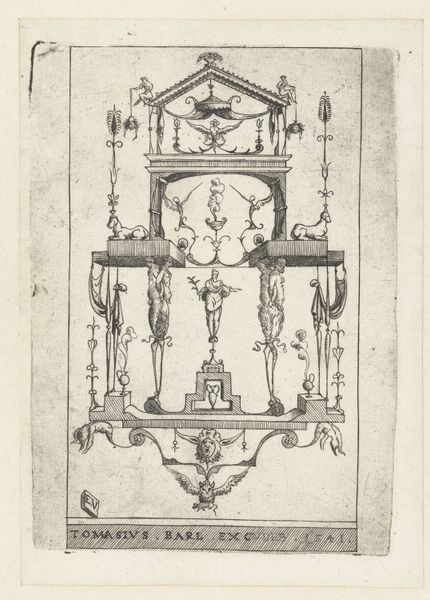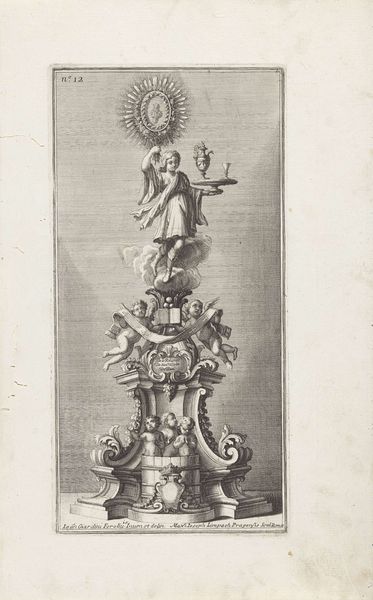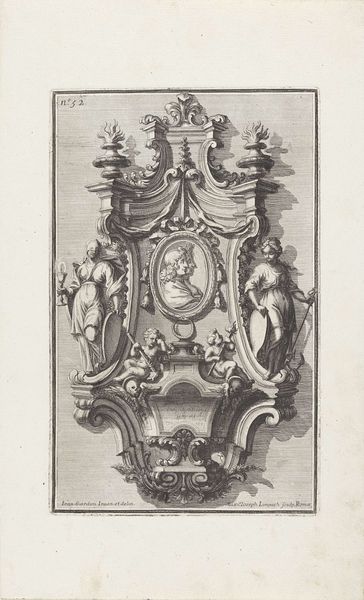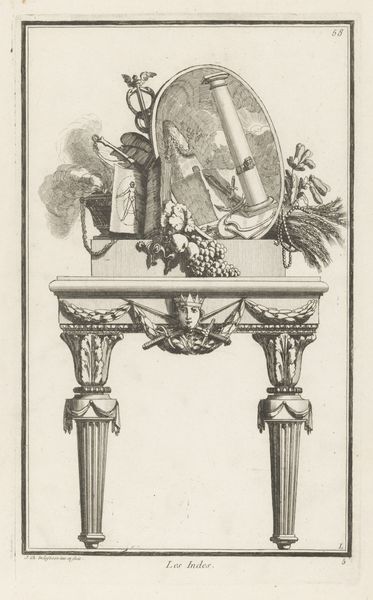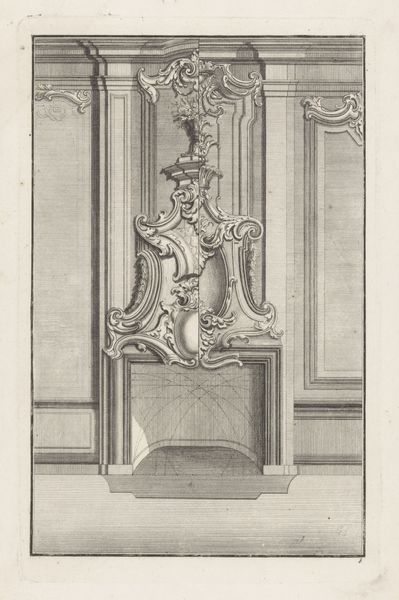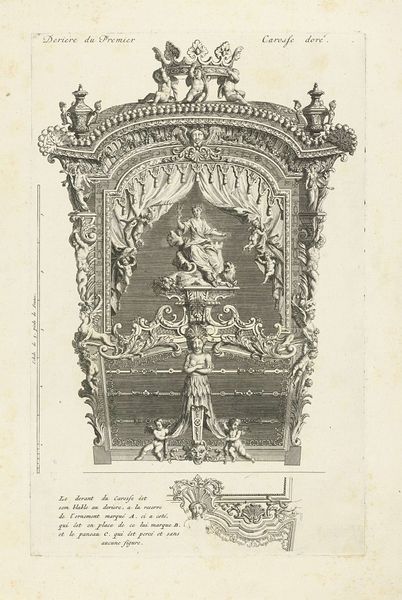
Dimensions: height 545 mm, width 420 mm
Copyright: Rijks Museum: Open Domain
Albertus Frese created this print titled 'Erepoort XXXI te Den Haag' in 1747, utilizing the intaglio process of etching. Here, a metal plate, likely copper, was coated with a waxy ground, upon which the artist scratched away the desired design. Immersed in acid, the exposed lines were bitten into the metal, allowing for precise replication. This printmaking technique democratized imagery in the 18th century, fueling the circulation of information and artistic ideas. The print depicts an elaborate triumphal arch, adorned with classical motifs and heraldic symbols, constructed for public spectacle. The emphasis on ornamentation and grandeur speaks to the social context of the time, reflecting the patronage of the elite and the power structures they upheld. Understanding the materials and processes involved sheds light on the cultural significance embedded within this image, and in turn challenges the divide between fine art and craft.
Comments
No comments
Be the first to comment and join the conversation on the ultimate creative platform.
